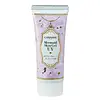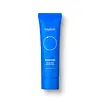What's inside
What's inside
 Key Ingredients
Key Ingredients

 Benefits
Benefits

 Concerns
Concerns

 Ingredients Side-by-side
Ingredients Side-by-side

Water
Skin ConditioningButylene Glycol
HumectantPhytic Acid
Larix Kaempferi Root Bark Extract
Skin ConditioningPEG-60 Hydrogenated Castor Oil
EmulsifyingMesua Ferrea Seed Extract
Skin ConditioningPolyhydroxystearic Acid
EmulsifyingPolymethylsilsesquioxane
Cyclopentasiloxane
EmollientHouttuynia Cordata Extract
Skin ConditioningTrihydroxystearin
Skin ConditioningVaccinium Myrtillus Fruit Extract
Skin ConditioningSilver Oxide
AntimicrobialNiacinamide
SmoothingPhenoxyethanol
PreservativeMethylheptyl Laurate
EmollientJojoba Esters
EmollientSchinus Molle Leaf Extract
Skin ConditioningXanthan Gum
EmulsifyingAluminum Hydroxide
EmollientPotassium Hydroxide
BufferingPolyglyceryl-2 Triisostearate
EmulsifyingOenothera Biennis Seed Extract
Skin ConditioningPolyglyceryl-3 Polydimethylsiloxyethyl Dimethicone
Skin ConditioningSolanum Lycopersicum Seed Extract
Skin ConditioningArginine
MaskingHydroxyethyl Acrylate/Sodium Acryloyldimethyl Taurate Copolymer
Emulsion StabilisingSalix Alba Flower Extract
Skin ConditioningPimpinella Anisum Seed Extract
AstringentDiethylamino Hydroxybenzoyl Hexyl Benzoate
UV FilterPopulus Nigra Flower Extract
Skin ConditioningTitanium Dioxide
Cosmetic ColorantBis-Ethylhexyloxyphenol Methoxyphenyl Triazine
Skin ConditioningAorta Extract
Skin ConditioningSaxifraga Sarmentosa Extract
Skin ConditioningBlue 1 Lake
Cosmetic ColorantSilica
AbrasiveAlpha-Glucan
HumectantMorus Alba Root Extract
BleachingCI 45380
Cosmetic ColorantBeta-Glucan
Skin ConditioningDimethicone
EmollientGlucosyl Ceramide
Skin ConditioningEthylhexyl Methoxycinnamate
UV AbsorberSodium Hyaluronate
HumectantAlumina
AbrasiveOctyldodecanol
EmollientPrunus Yedoensis Leaf Extract
Skin ConditioningCetyl Ethylhexanoate
EmollientDiisostearyl Malate
EmollientRosa Rugosa Leaf Extract
HumectantCI 77492
Cosmetic ColorantStearic Acid
CleansingCynara Scolymus Leaf Extract
Skin ConditioningZinc Oxide
Cosmetic ColorantParfum
MaskingSpiraea Ulmaria Flower Extract
Skin ConditioningBetula Alba Leaf Extract
AstringentSalvia Officinalis Extract
AntimicrobialTocopherol
AntioxidantWater, Butylene Glycol, Phytic Acid, Larix Kaempferi Root Bark Extract, PEG-60 Hydrogenated Castor Oil, Mesua Ferrea Seed Extract, Polyhydroxystearic Acid, Polymethylsilsesquioxane, Cyclopentasiloxane, Houttuynia Cordata Extract, Trihydroxystearin, Vaccinium Myrtillus Fruit Extract, Silver Oxide, Niacinamide, Phenoxyethanol, Methylheptyl Laurate, Jojoba Esters, Schinus Molle Leaf Extract, Xanthan Gum, Aluminum Hydroxide, Potassium Hydroxide, Polyglyceryl-2 Triisostearate, Oenothera Biennis Seed Extract, Polyglyceryl-3 Polydimethylsiloxyethyl Dimethicone, Solanum Lycopersicum Seed Extract, Arginine, Hydroxyethyl Acrylate/Sodium Acryloyldimethyl Taurate Copolymer, Salix Alba Flower Extract, Pimpinella Anisum Seed Extract, Diethylamino Hydroxybenzoyl Hexyl Benzoate, Populus Nigra Flower Extract, Titanium Dioxide, Bis-Ethylhexyloxyphenol Methoxyphenyl Triazine, Aorta Extract, Saxifraga Sarmentosa Extract, Blue 1 Lake, Silica, Alpha-Glucan, Morus Alba Root Extract, CI 45380, Beta-Glucan, Dimethicone, Glucosyl Ceramide, Ethylhexyl Methoxycinnamate, Sodium Hyaluronate, Alumina, Octyldodecanol, Prunus Yedoensis Leaf Extract, Cetyl Ethylhexanoate, Diisostearyl Malate, Rosa Rugosa Leaf Extract, CI 77492, Stearic Acid, Cynara Scolymus Leaf Extract, Zinc Oxide, Parfum, Spiraea Ulmaria Flower Extract, Betula Alba Leaf Extract, Salvia Officinalis Extract, Tocopherol
Water
Skin ConditioningDibutyl Adipate
EmollientPropanediol
SolventPolymethylsilsesquioxane
Diisopropyl Sebacate
EmollientDiethylamino Hydroxybenzoyl Hexyl Benzoate
UV FilterEthylhexyl Triazone
UV AbsorberNiacinamide
SmoothingMethylene Bis-Benzotriazolyl Tetramethylbutylphenol
UV FilterCoco-Caprylate/Caprate
EmollientDiethylhexyl Butamido Triazone
UV AbsorberGlycerin
Humectant1,2-Hexanediol
Skin ConditioningButylene Glycol
HumectantCaprylyl Methicone
Skin ConditioningPentylene Glycol
Skin ConditioningBehenyl Alcohol
EmollientPoly C10-30 Alkyl Acrylate
Emulsion StabilisingPolyglyceryl-3 Methylglucose Distearate
EmulsifyingDecyl Glucoside
CleansingTromethamine
BufferingCarbomer
Emulsion StabilisingAcrylates/C10-30 Alkyl Acrylate Crosspolymer
Emulsion StabilisingSodium Stearoyl Glutamate
CleansingPolyacrylate Crosspolymer-6
Emulsion StabilisingEthylhexylglycerin
Skin ConditioningAdenosine
Skin ConditioningXanthan Gum
EmulsifyingT-Butyl Alcohol
PerfumingTocopherol
AntioxidantWater, Dibutyl Adipate, Propanediol, Polymethylsilsesquioxane, Diisopropyl Sebacate, Diethylamino Hydroxybenzoyl Hexyl Benzoate, Ethylhexyl Triazone, Niacinamide, Methylene Bis-Benzotriazolyl Tetramethylbutylphenol, Coco-Caprylate/Caprate, Diethylhexyl Butamido Triazone, Glycerin, 1,2-Hexanediol, Butylene Glycol, Caprylyl Methicone, Pentylene Glycol, Behenyl Alcohol, Poly C10-30 Alkyl Acrylate, Polyglyceryl-3 Methylglucose Distearate, Decyl Glucoside, Tromethamine, Carbomer, Acrylates/C10-30 Alkyl Acrylate Crosspolymer, Sodium Stearoyl Glutamate, Polyacrylate Crosspolymer-6, Ethylhexylglycerin, Adenosine, Xanthan Gum, T-Butyl Alcohol, Tocopherol
 Reviews
Reviews

Ingredients Explained
These ingredients are found in both products.
Ingredients higher up in an ingredient list are typically present in a larger amount.
Butylene Glycol (or BG) is used within cosmetic products for a few different reasons:
Overall, Butylene Glycol is a safe and well-rounded ingredient that works well with other ingredients.
Though this ingredient works well with most skin types, some people with sensitive skin may experience a reaction such as allergic rashes, closed comedones, or itchiness.
Learn more about Butylene GlycolDiethylamino Hydroxybenzoyl Hexyl Benzoate (DHHB) is a chemical UV-A absorber. It is formulated for high UVA protection (320-400 nm).
DHHB is well-liked for:
DHHB has been approved by the EU, Japan, Taiwan, and South America for use up to 10%. Unfortunately, it has not been approved for use in the US or Canada due to slow regulatory processes.
This ingredient is soluble in oils, fats, and lipids.
Learn more about Diethylamino Hydroxybenzoyl Hexyl BenzoateNiacinamide is a multitasking form of vitamin B3 that strengthens the skin barrier, reduces pores and dark spots, regulates oil, and improves signs of aging.
And the best part? It's gentle and well-tolerated by most skin types, including sensitive and reactive skin.
You might have heard of "niacin flush", or the reddening of skin that causes itchiness. Niacinamide has not been found to cause this.
In very rare cases, some individuals may not be able to tolerate niacinamide at all or experience an allergic reaction to it.
If you are experiencing flaking, irritation, and dryness with this ingredient, be sure to double check all your products as this ingredient can be found in all categories of skincare.
When incorporating niacinamide into your routine, look out for concentration amounts. Typically, 5% niacinamide provides benefits such as fading dark spots. However, if you have sensitive skin, it is better to begin with a smaller concentration.
When you apply niacinamide to your skin, your body converts it into nicotinamide adenine dinucleotide (NAD). NAD is an essential coenzyme that is already found in your cells as "fuel" and powers countless biological processes.
In your skin, NAD helps repair cell damage, produce new healthy cells, support collagen production, strengthen the skin barrier, and fight environmental stressors (like UV and pollution).
Our natural NAD levels start to decline with age, leading to slower skin repair, visible aging, and a weaker skin barrier. By providing your skin niacinamide, you're recharging your skin's NAD levels. This leads to stronger, healthier, and younger looking skin.
Another name for vitamin B3 is nicotinamide. This vitamin is water-soluble and our bodies don't store it. We obtain Vitamin B3 from either food or skincare. Meat, fish, wheat, yeast, and leafy greens contain vitamin B3.
The type of niacinamide used in skincare is synthetically created.
Learn more about NiacinamidePolymethylsilsesquioxane is a silicone used as a film forming agent.
When applied to the skin, this ingredient creates an invisible film on the surface. This film still allows oxygen to pass through, but prevents moisture from escaping. This can help condition and hydrate the skin. It also leaves a silky feel when applied.
Polymethylsilsesquioxane has not been shown to clog pores. It has been deemed safe to use up to 55%, but most cosmetics use much less.
If you have concerns about using this ingredient, we recommend speaking with a professional.
Learn more about PolymethylsilsesquioxaneTocopherol (also known as Vitamin E) is a common antioxidant used to help protect the skin from free-radicals and strengthen the skin barrier. It's also fat soluble - this means our skin is great at absorbing it.
Vitamin E also helps keep your natural skin lipids healthy. Your lipid skin barrier naturally consists of lipids, ceramides, and fatty acids. Vitamin E offers extra protection for your skin’s lipid barrier, keeping your skin healthy and nourished.
Another benefit is a bit of UV protection. Vitamin E helps reduce the damage caused by UVB rays. (It should not replace your sunscreen). Combining it with Vitamin C can decrease sunburned cells and hyperpigmentation after UV exposure.
You might have noticed Vitamin E + C often paired together. This is because it is great at stabilizing Vitamin C. Using the two together helps increase the effectiveness of both ingredients.
There are often claims that Vitamin E can reduce/prevent scarring, but these claims haven't been confirmed by scientific research.
Learn more about TocopherolWater. It's the most common cosmetic ingredient of all. You'll usually see it at the top of ingredient lists, meaning that it makes up the largest part of the product.
So why is it so popular? Water most often acts as a solvent - this means that it helps dissolve other ingredients into the formulation.
You'll also recognize water as that liquid we all need to stay alive. If you see this, drink a glass of water. Stay hydrated!
Learn more about WaterXanthan gum is used as a stabilizer and thickener within cosmetic products. It helps give products a sticky, thick feeling - preventing them from being too runny.
On the technical side of things, xanthan gum is a polysaccharide - a combination consisting of multiple sugar molecules bonded together.
Xanthan gum is a pretty common and great ingredient. It is a natural, non-toxic, non-irritating ingredient that is also commonly used in food products.
Learn more about Xanthan Gum